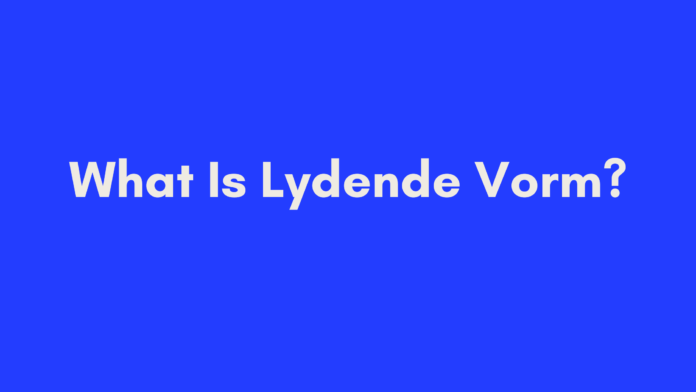Quick Summary
Lydende Vorm, or the passive voice in Afrikaans, is a grammatical construction where the focus of a sentence shifts from the subject performing the action to the object receiving it. This structure allows for greater emphasis on the action or the recipient of the action rather than the doer.
In Afrikaans, Lydende Vorm is formed using the auxiliary verb “word” combined with the past participle of the main verb. For example, “Die boek word gelees” translates to “The book is being read,” highlighting the book as the focus rather than who is reading it.
Mastering Lydende Vorm is crucial for effective communication, offering flexibility in expressing ideas and reporting events. This guide covers the basics of forming Lydende Vorm, when to use it, common mistakes to avoid, and practical tips for mastering this aspect of Afrikaans grammar.
Introduction to Lydende Vorm
What is Lydende Vorm?
Lydende Vorm, known as the passive voice in English, is a crucial grammatical concept in Afrikaans. It involves structuring sentences in a way where the focus shifts from the subject performing the action to the object that receives or undergoes the action. This transformation is key to varying sentence structure and emphasizing different parts of a sentence.
In simple terms, Lydende Vorm changes the focus of the sentence from who is performing the action to who is experiencing it. For example, in the active voice, you might say:
- Active Voice: “Die hond byt die man.” (The dog bites the man.)
In the passive voice or Lydende Vorm, the sentence changes to:
- Passive Voice/Lydende Vorm: “Die man word deur die hond gebyt.” (The man is bitten by the dog.)
Understanding and using Lydende Vorm correctly allows you to emphasize different aspects of a sentence, providing more flexibility in communication.
Why Is Lydende Vorm Important?
Lydende Vorm is not just a grammatical curiosity; it plays a significant role in effective communication. By using the passive voice, you can:
- Emphasize the Action: Focus on what is being done rather than who is doing it.
- Shift Focus: Change the emphasis in a sentence to highlight the object or recipient of the action.
- Add Variety: Introduce variety in your writing and speech, making it more engaging and dynamic.
For instance, if you’re writing a news report, you might want to emphasize the event rather than the individuals involved. Instead of saying, “The police arrested the suspect,” you might say, “The suspect was arrested,” which places the emphasis on the suspect and the action taken.
Understanding the Structure of Lydende Vorm
Components of Lydende Vorm
To form Lydende Vorm in Afrikaans, you need to understand its structure, which consists of two main components:
- Auxiliary Verb “Word”: This verb acts as a helper to form the passive voice. It changes according to tense or mood but remains consistent with the subject’s gender and number.
- Past Participle of the Main Verb: This is the form of the verb used to indicate the action that has been performed.
Example:
- Active Voice: “Die lektor het die lesing aangebied.” (The lecturer presented the lecture.)
- Passive Voice/Lydende Vorm: “Die lesing is deur die lektor aangebied.” (The lecture was presented by the lecturer.)
How to Form Lydende Vorm
Step-by-Step Guide:
- Identify the Main Verb: Determine the verb that expresses the action in the sentence.
- Add the Auxiliary Verb “Word”: Place “word” before the past participle of the main verb.
- Modify the Main Verb: Convert the main verb into its past participle form.
Examples:
- Verb Conjugation Patterns:
- Pattern 1: Infinitive ends with “-en” (e.g., “lees” -> “gelees”).
- Pattern 2: Infinitive ends with a vowel (e.g., “drink” -> “gedrink”).
- Pattern 3: Infinitive ends with a consonant other than “-n” (e.g., “eet” -> “geëet”).
Example Table:
| Verb | Active Voice | Lydende Vorm |
|---|---|---|
| lees | Ek lees die boek. | Die boek word gelees. |
| drink | Jy drink die water. | Die water word gedrink. |
| eet | Hy eet die koek. | Die koek word geëet. |
When to Use Lydende Vorm
Emphasizing the Action or Process
Lydende Vorm is particularly useful when you want to emphasize the action itself rather than the person or thing performing the action. This can be particularly effective in formal writing, scientific contexts, or news reporting.
Examples:
- Active Voice: “Die hond het die bal gebring.” (The dog brought the ball.)
- Passive Voice/Lydende Vorm: “Die bal is deur die hond gebring.” (The ball was brought by the dog.)
This construction focuses on the action of bringing the ball, rather than on the dog that performed the action.
Expressing General Statements
When you want to make general statements or observations without specifying who is performing the action, Lydende Vorm is helpful. It allows you to present information in a way that highlights the action or state rather than the agent.
Examples:
- Active Voice: “Mense gebruik hierdie roete elke dag.” (People use this route every day.)
- Passive Voice/Lydende Vorm: “Hierdie roete word elke dag gebruik.” (This route is used every day.)
Here, the focus is on the route being used daily, rather than on who is using it.
Reporting Events or Actions
In reporting events, describing historical facts, or recounting stories, Lydende Vorm helps to convey information in a more objective manner. It shifts the focus from the actor to the event itself, which can be useful in journalism and historical writing.
Examples:
- Active Voice: “Die span het die wedstryd gewen.” (The team won the match.)
- Passive Voice/Lydende Vorm: “Die wedstryd is deur die span gewen.” (The match was won by the team.)
This construction emphasizes the outcome of the match rather than the team that achieved it.
Common Mistakes to Avoid with Lydende Vorm
Understanding and using Lydende Vorm effectively can be challenging, especially if you are new to it. Here are some common mistakes to watch out for:
1. Confusing Active and Passive Voices
One of the most frequent errors is mixing up active and passive voices. In Lydende Vorm, the subject receives the action rather than performing it. It’s crucial to ensure that you’re using the correct form to avoid confusion.
Examples:
- Active Voice: “Die hond byt die man.” (The dog bites the man.)
- Mistake in Passive Voice: “Die hond word deur die man gebyt.” (Incorrect: The dog is bitten by the man.)
Correct Passive Voice: “Die man word deur die hond gebyt.” (The man is bitten by the dog.)
2. Incorrect Verb Forms
Using incorrect past participle forms or the wrong conjugation of the auxiliary verb “word” can lead to grammatical errors. Make sure you modify the main verb and auxiliary verb according to the subject and tense.
Examples:
- Incorrect: “Die boek was gelees deur my.” (The book was read by me.)
- Correct: “Die boek is deur my gelees.” (The book was read by me.)
3. Overusing Passive Voice
While Lydende Vorm can add variety to your writing, overusing it can make your text seem impersonal or unclear. Use the passive voice judiciously, balancing it with active voice to maintain clarity and engagement.
Example:
- Overused Passive: “Die tydskrif is deur die skrywer geskryf. Die tydskrif is gepubliseer deur die uitgewer. Die tydskrif is versprei deur die verspreider.”
- Balanced Usage: “Die skrywer het die tydskrif geskryf. Daarna het die uitgewer dit gepubliseer, en die verspreider het dit versprei.”
4. Misplacing the Agent
In Lydende Vorm, the agent (the doer of the action) often appears at the end of the sentence, preceded by “deur” (by). Misplacing or omitting the agent can lead to ambiguity or misunderstanding.
Examples:
- Incorrect: “Die brief is geskryf.” (The letter was written.) – Who wrote it?
- Correct: “Die brief is deur die sekretaresse geskryf.” (The letter was written by the secretary.)
How to Master Lydende Vorm
Mastering Lydende Vorm involves practice and attention to detail. Here are some tips to help you become proficient:
1. Practice Regularly
The more you practice forming sentences in the passive voice, the more comfortable you will become. Try transforming active voice sentences into passive ones and vice versa.
Example Exercise:
- Active: “Die student skryf ‘n opstel.” (The student writes an essay.)
- Passive: “Die opstel word deur die student geskryf.” (The essay is written by the student.)
2. Read and Analyze Examples
Reading well-written Afrikaans texts, such as newspapers, literature, or academic papers, can help you see how Lydende Vorm is used effectively. Analyze how the passive voice is employed to emphasize different aspects of the content.
Recommended Resources:
3. Use Grammar Tools
Leverage grammar tools and resources to check your usage of Lydende Vorm. Online grammar checkers and Afrikaans grammar guides can provide valuable feedback and corrections.
Tools:
4. Seek Feedback
If possible, ask native speakers or language experts to review your writing. They can provide insights and corrections that will help you improve your mastery of Lydende Vorm.
Conclusion
Understanding Lydende Vorm is essential for mastering Afrikaans grammar and enhancing your communication skills. By grasping the structure, knowing when to use it, and avoiding common mistakes, you can effectively utilize the passive voice to add variety and emphasis to your writing.
Remember, practice is key. Regularly using Lydende Vorm in both written and spoken Afrikaans will help you become more comfortable and proficient. With these tips and resources, you’ll be well on your way to mastering this important grammatical concept.
References
For further reading and additional resources on Lydende Vorm, consider the following:
- Pinterest Pin on Lydende Vorm
- YouTube Video: Understanding Lydende Vorm
- QR Learn: Lydende Vorm (Passive Voice) in Afrikaans
These resources offer visual and detailed explanations to help deepen your understanding of Afrikaans passive voice and its applications.
Frequently Asked Questions
Understanding Lydende Vorm can raise several questions, especially for learners new to Afrikaans grammar. Here are some common questions and their answers to help clarify your doubts:
1. What is the difference between Lydende Vorm and the active voice?
Lydende Vorm (passive voice) and the active voice differ in their sentence structures and focus. In the active voice, the subject performs the action, while in the passive voice, the focus shifts to the object receiving the action.
Examples:
- Active Voice: “Die hond byt die man.” (The dog bites the man.)
- Passive Voice/Lydende Vorm: “Die man word deur die hond gebyt.” (The man is bitten by the dog.)
In the active voice, “die hond” (the dog) is the doer of the action, whereas in the passive voice, “die man” (the man) is the recipient of the action.
2. Can Lydende Vorm be used in all tenses?
Yes, Lydende Vorm can be used in various tenses just like the active voice. The auxiliary verb “word” changes according to the tense being used.
Examples:
- Present Tense:
- Active Voice: “Die kat eet vis.” (The cat eats fish.)
- Passive Voice: “Vis word deur die kat geëet.” (Fish is eaten by the cat.)
- Past Tense:
- Active Voice: “Hy het kos gekook.” (He cooked food.)
- Passive Voice: “Kos is deur hom gekook.” (Food was cooked by him.)
- Future Tense:
- Active Voice: “Sy sal die huis skoonmaak.” (She will clean the house.)
- Passive Voice: “Die huis sal deur haar skoongemaak word.” (The house will be cleaned by her.)
3. How can I identify Lydende Vorm in a sentence?
To identify Lydende Vorm (passive voice) in a sentence, look for these key indicators:
- The auxiliary verb “word” is used before the main verb.
- The past participle form of the main verb follows “word.”
- The subject receiving or undergoing the action comes after “word.”
Example:
- Sentence: “Die boek word gelees deur my vriendin.” (The book is being read by my friend.)
- Identification:
- “word” is used.
- “gelees” is the past participle.
- “die boek” (the book) is receiving the action.
4. Why is Lydende Vorm important in Afrikaans?
Lydende Vorm is important because it allows for flexibility in sentence structure and emphasis. It helps:
- Highlight the action: Focus on the action itself rather than who is performing it.
- Create variety: Add variety to your writing style by shifting focus and perspective.
- Report events: Objectively report on events or actions without emphasizing the doer.
By using Lydende Vorm effectively, you can enhance your communication in Afrikaans, making your writing and speech more engaging and diverse.
Author’s Note
As someone deeply fascinated by the nuances of language, I’ve found that understanding grammatical structures like Lydende Vorm (passive voice) in Afrikaans opens up a new dimension of expression and clarity in communication. This article aims to demystify Lydende Vorm, making it accessible and useful for learners and enthusiasts alike.
Throughout my studies and practical use of Afrikaans, I’ve come to appreciate how Lydende Vorm not only enriches sentence structure but also provides a valuable tool for emphasizing different aspects of a sentence. Whether you’re a student, a writer, or simply someone interested in languages, mastering Lydende Vorm can enhance both your understanding and use of Afrikaans.
The examples and tips shared here are drawn from a combination of academic research, language practice, and personal experience. They reflect common challenges and practical solutions that I’ve encountered along the way. I hope this guide offers you clear insights and practical strategies to effectively use Lydende Vorm in your own writing and speaking.
Feel free to explore the additional resources and examples provided to deepen your grasp of this important grammatical feature. If you have any questions or need further clarification, don’t hesitate to reach out. Happy learning!

Oliver is a full-time writer with a passion for creating compelling content on diverse topics, including finance, business, product reviews, and more. With a keen eye for detail and a commitment to thorough research, she brings clarity and depth to complex subjects, making them accessible and engaging for readers. Oliver’s dedication to her craft ensures that every article is informative, well-researched, and thought-provoking. Outside of writing, she enjoys exploring new ideas, reading extensively, and continually expanding her knowledge.
Editorial Process
At Trusted Sources, our editorial process is crafted to ensure that every piece of content we produce—whether it’s an informational article or a review—meets the highest standards of accuracy, reliability, and engagement. Our commitment to delivering valuable, research-driven, and reader-centric content is reflected in our systematic and meticulous editorial approach.
Affiliate Disclosure
we are committed to transparency and honesty in all aspects of our operations, including our affiliate partnerships. We participate in various affiliate programs, which means we may earn commissions on qualifying purchases made through links on our Website.


